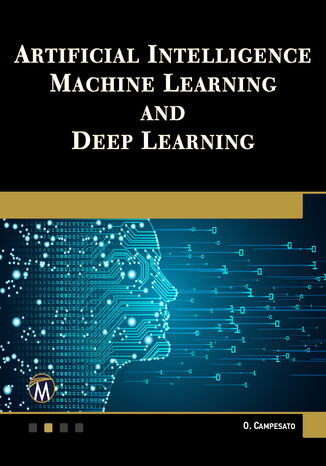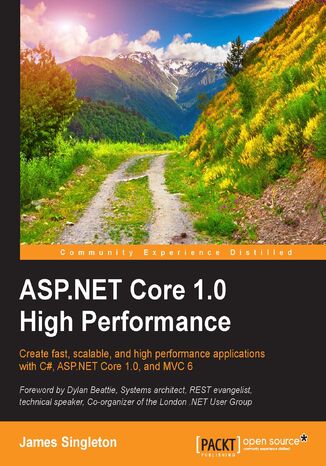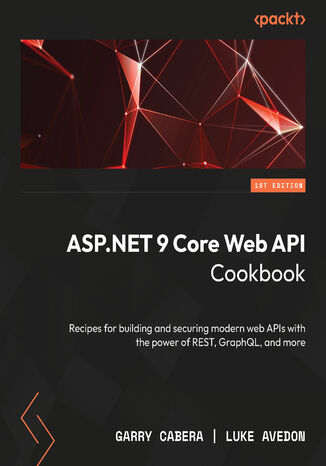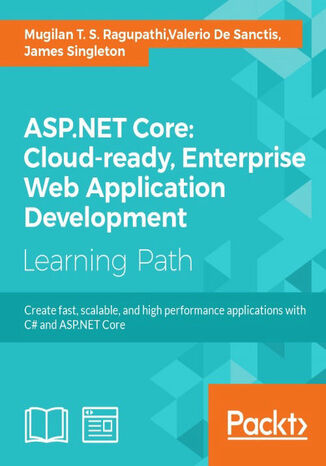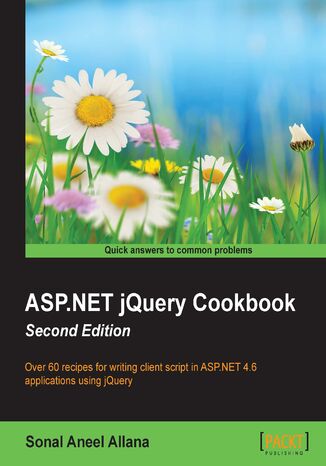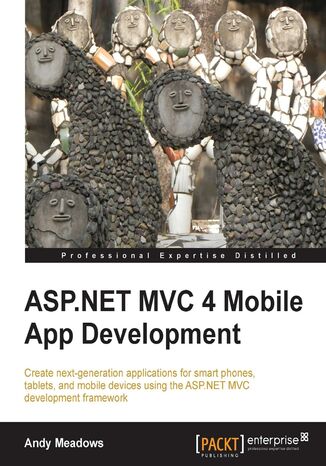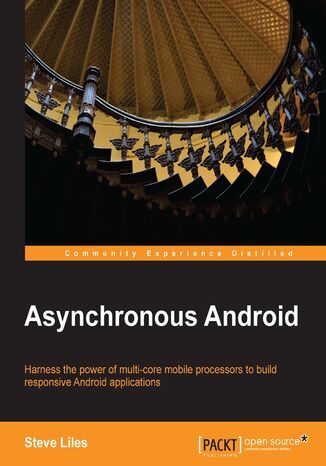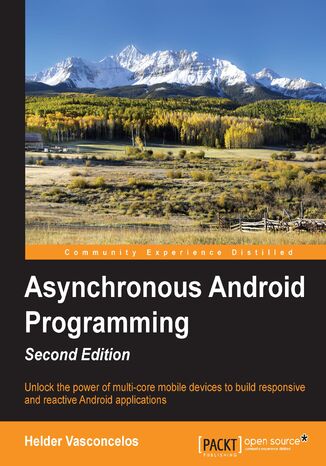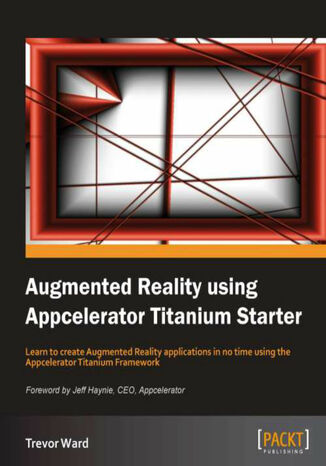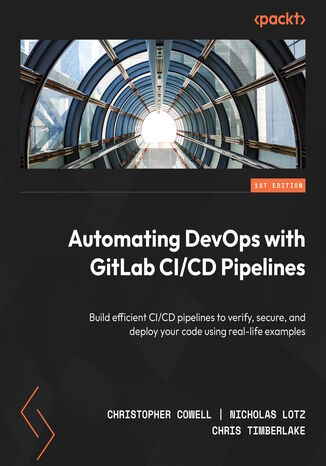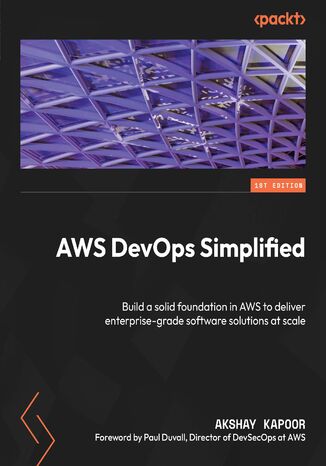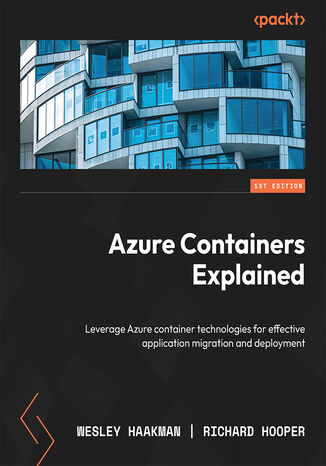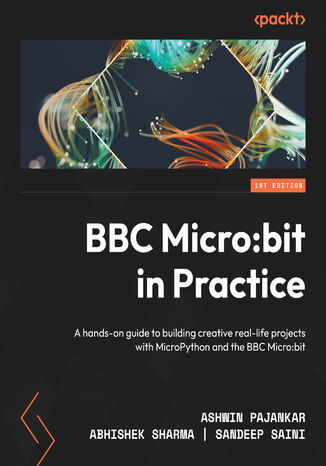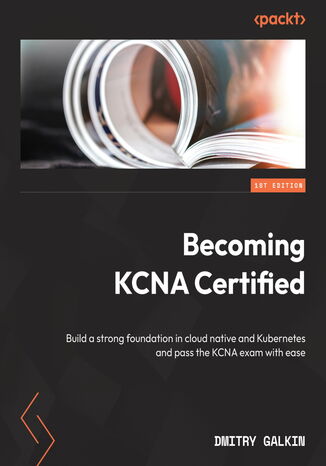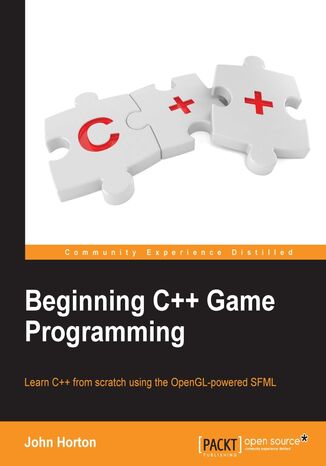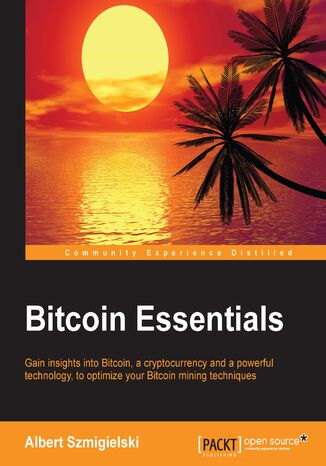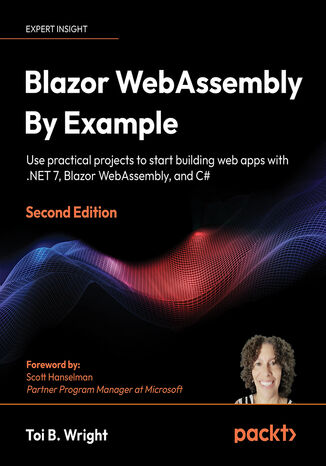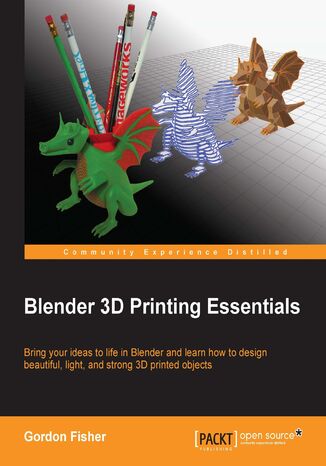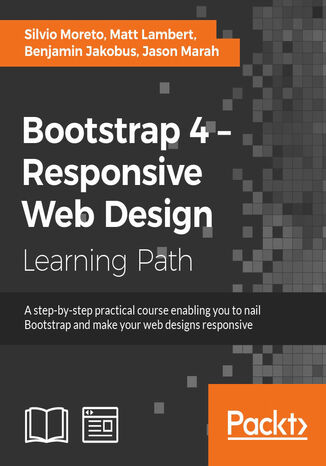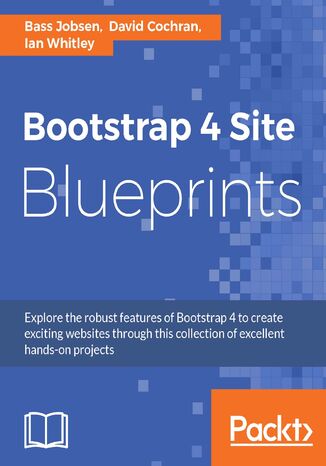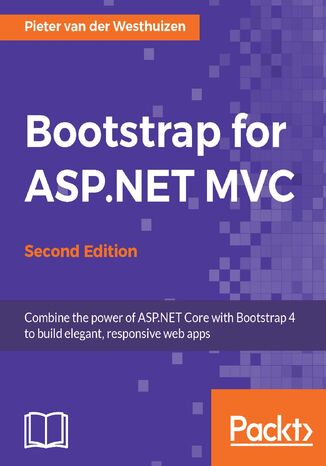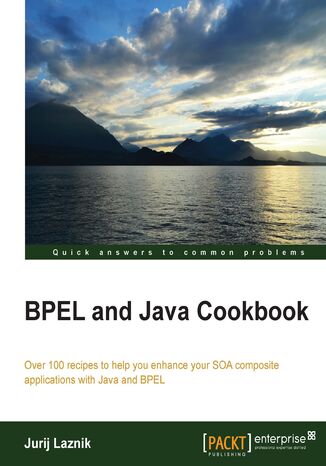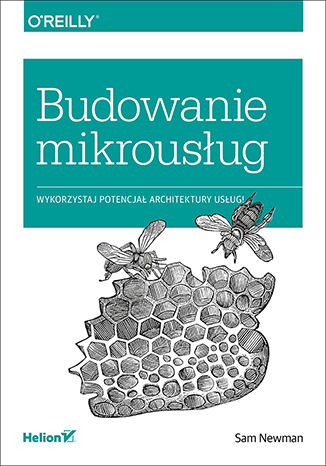Categories
Ebooks
-
Business and economy
- Bitcoin
- Businesswoman
- Coaching
- Controlling
- E-business
- Economy
- Finances
- Stocks and investments
- Personal competence
- Computer in the office
- Communication and negotiation
- Small company
- Marketing
- Motivation
- Multimedia trainings
- Real estate
- Persuasion and NLP
- Taxes
- Social policy
- Guides
- Presentations
- Leadership
- Public Relation
- Reports, analyses
- Secret
- Social Media
- Sales
- Start-up
- Your career
- Management
- Project management
- Human Resources
-
For children
-
For youth
-
Education
-
Encyclopedias, dictionaries
-
E-press
- Architektura i wnętrza
- Health and Safety
- Biznes i Ekonomia
- Home and garden
- E-business
- Ekonomia i finanse
- Esoterecism
- Finances
- Personal finance
- Business
- Photography
- Computer science
- HR & Payroll
- For women
- Computers, Excel
- Accounts
- Culture and literature
- Scientific and academic
- Environmental protection
- Opinion-forming
- Education
- Taxes
- Travelling
- Psychology
- Religion
- Agriculture
- Book and press market
- Transport and Spedition
- Healthand beauty
-
History
-
Computer science
- Office applications
- Data bases
- Bioinformatics
- IT business
- CAD/CAM
- Digital Lifestyle
- DTP
- Electronics
- Digital photography
- Computer graphics
- Games
- Hacking
- Hardware
- IT w ekonomii
- Scientific software package
- School textbooks
- Computer basics
- Programming
- Mobile programming
- Internet servers
- Computer networks
- Start-up
- Operational systems
- Artificial intelligence
- Technology for children
- Webmastering
-
Other
-
Foreign languages
-
Culture and art
-
School reading books
-
Literature
- Antology
- Ballade
- Biographies and autobiographies
- For adults
- Dramas
- Diaries, memoirs, letters
- Epic, epopee
- Essay
- Fantasy and science fiction
- Feuilletons
- Work of fiction
- Humour and satire
- Other
- Classical
- Crime fiction
- Non-fiction
- Fiction
- Mity i legendy
- Nobelists
- Novellas
- Moral
- Okultyzm i magia
- Short stories
- Memoirs
- Travelling
- Narrative poetry
- Poetry
- Politics
- Popular science
- Novel
- Historical novel
- Prose
- Adventure
- Journalism, publicism
- Reportage novels
- Romans i literatura obyczajowa
- Sensational
- Thriller, Horror
- Interviews and memoirs
-
Natural sciences
-
Social sciences
-
School textbooks
-
Popular science and academic
- Archeology
- Bibliotekoznawstwo
- Cinema studies
- Philology
- Polish philology
- Philosophy
- Finanse i bankowość
- Geography
- Economy
- Trade. World economy
- History and archeology
- History of art and architecture
- Cultural studies
- Linguistics
- Literary studies
- Logistics
- Maths
- Medicine
- Humanities
- Pedagogy
- Educational aids
- Popular science
- Other
- Psychology
- Sociology
- Theatre studies
- Theology
- Economic theories and teachings
- Transport i spedycja
- Physical education
- Zarządzanie i marketing
-
Guides
-
Game guides
-
Professional and specialist guides
-
Law
- Health and Safety
- History
- Road Code. Driving license
- Law studies
- Healthcare
- General. Compendium of knowledge
- Academic textbooks
- Other
- Construction and local law
- Civil law
- Financial law
- Economic law
- Economic and trade law
- Criminal law
- Criminal law. Criminal offenses. Criminology
- International law
- International law
- Health care law
- Educational law
- Tax law
- Labor and social security law
- Public, constitutional and administrative law
- Family and Guardianship Code
- agricultural law
- Social law, labour law
- European Union law
- Industry
- Agricultural and environmental
- Dictionaries and encyclopedia
- Public procurement
- Management
-
Tourist guides and travel
- Africa
- Albums
- Southern America
- North and Central America
- Australia, New Zealand, Oceania
- Austria
- Asia
- Balkans
- Middle East
- Bulgary
- China
- Croatia
- The Czech Republic
- Denmark
- Egipt
- Estonia
- Europe
- France
- Mountains
- Greece
- Spain
- Holand
- Iceland
- Lithuania
- Latvia
- Mapy, Plany miast, Atlasy
- Mini travel guides
- Germany
- Norway
- Active travelling
- Poland
- Portugal
- Other
- Przewodniki po hotelach i restauracjach
- Russia
- Romania
- Slovakia
- Slovenia
- Switzerland
- Sweden
- World
- Turkey
- Ukraine
- Hungary
- Great Britain
- Italy
-
Psychology
- Philosophy of life
- Kompetencje psychospołeczne
- Interpersonal communication
- Mindfulness
- General
- Persuasion and NLP
- Academic psychology
- Psychology of soul and mind
- Work psychology
- Relacje i związki
- Parenting and children psychology
- Problem solving
- Intellectual growth
- Secret
- Sexapeal
- Seduction
- Appearance and image
- Philosophy of life
-
Religion
-
Sport, fitness, diets
-
Technology and mechanics
Audiobooks
-
Business and economy
- Bitcoin
- Businesswoman
- Coaching
- Controlling
- E-business
- Economy
- Finances
- Stocks and investments
- Personal competence
- Communication and negotiation
- Small company
- Marketing
- Motivation
- Real estate
- Persuasion and NLP
- Taxes
- Social policy
- Guides
- Presentations
- Leadership
- Public Relation
- Secret
- Social Media
- Sales
- Start-up
- Your career
- Management
- Project management
- Human Resources
-
For children
-
For youth
-
Education
-
Encyclopedias, dictionaries
-
E-press
-
History
-
Computer science
-
Other
-
Foreign languages
-
Culture and art
-
School reading books
-
Literature
- Antology
- Ballade
- Biographies and autobiographies
- For adults
- Dramas
- Diaries, memoirs, letters
- Epic, epopee
- Essay
- Fantasy and science fiction
- Feuilletons
- Work of fiction
- Humour and satire
- Other
- Classical
- Crime fiction
- Non-fiction
- Fiction
- Mity i legendy
- Nobelists
- Novellas
- Moral
- Okultyzm i magia
- Short stories
- Memoirs
- Travelling
- Poetry
- Politics
- Popular science
- Novel
- Historical novel
- Prose
- Adventure
- Journalism, publicism
- Reportage novels
- Romans i literatura obyczajowa
- Sensational
- Thriller, Horror
- Interviews and memoirs
-
Natural sciences
-
Social sciences
-
Popular science and academic
-
Guides
-
Professional and specialist guides
-
Law
-
Tourist guides and travel
-
Psychology
- Philosophy of life
- Interpersonal communication
- Mindfulness
- General
- Persuasion and NLP
- Academic psychology
- Psychology of soul and mind
- Work psychology
- Relacje i związki
- Parenting and children psychology
- Problem solving
- Intellectual growth
- Secret
- Sexapeal
- Seduction
- Appearance and image
- Philosophy of life
-
Religion
-
Sport, fitness, diets
-
Technology and mechanics
Videocourses
-
Data bases
-
Big Data
-
Biznes, ekonomia i marketing
-
Cybersecurity
-
Data Science
-
DevOps
-
For children
-
Electronics
-
Graphics/Video/CAX
-
Games
-
Microsoft Office
-
Development tools
-
Programming
-
Personal growth
-
Computer networks
-
Operational systems
-
Software testing
-
Mobile devices
-
UX/UI
-
Web development
-
Management
Podcasts
- Ebooks
- Programming
- Programming techniques
Programming techniques
Q might have Bond’s gadgets– but he doesn’t have an Arduino (not yet at least). Find out how the tiny Arduino microcomputer can be used to build an impressive range of neat secret agent projects that can help you go undercover and get to grips with the cutting-edge of the world of espionage with this book, created for ardent Arduino fans and anyone new to the powerful device.Each chapter shows you how to construct a different secret agent gadget, helping you to unlock the full potential of your Arduino and make sure you have a solution for every tricky spying situation.You’ll find out how to build everything from an alarm system to a fingerprint sensor, each project demonstrating a new feature of Arduino, so you can build your expertise as you complete each project. Learn how to open a lock with a text message, monitor top secret data remotely, and even create your own Arduino Spy Robot, Spy Microphone System, and Cloud Spy Camera This book isn’t simply an instruction manual – it helps you put your knowledge into action so you can build every single project to completion.
Mercury Learning and Information, Oswald Campesato
This book introduces AI, then explores machine learning, deep learning, natural language processing (NLP), and reinforcement learning. Readers learn about classifiers like logistic regression, k-NN, decision trees, random forests, and SVMs. It delves into deep learning architectures such as CNNs, RNNs, LSTMs, and autoencoders, with Keras-based code samples supplementing the theory.Starting with a foundational AI overview, the course progresses into machine learning, explaining classifiers and their applications. It continues with deep learning, focusing on architectures like CNNs and RNNs. Advanced topics include LSTMs and autoencoders, essential for modern AI. The book also covers NLP and reinforcement learning, emphasizing their importance.Understanding these concepts is vital for developing advanced AI systems. This book transitions you from beginner to proficient AI practitioner, combining theoretical knowledge and practical skills. Appendices on Keras, TensorFlow 2, and Pandas enrich the learning experience. By the end, readers will understand AI principles and be ready to apply them in real-world scenarios.
James Singleton, Pawan Awasthi, Dylan Beattie
ASP.NET Core is the new, open source, and cross-platform, web-application framework from Microsoft. It's a stripped down version of ASP.NET that's lightweight and fast. This book will show you how to make your web apps deliver high performance when using it.We'll address many performance improvement techniques from both a general web standpoint and from a C#, ASP.NET Core, and .NET Core perspective. This includes delving into the latest frameworks and demonstrating software design patterns that improve performance.We will highlight common performance pitfalls, which can often occur unnoticed on developer workstations, along with strategies to detect and resolve these issues early. By understanding and addressing challenges upfront, you can avoid nasty surprises when it comes to deployment time.We will introduce performance improvements along with the trade-offs that they entail. We will strike a balance between premature optimization and inefficient code by taking a scientific- and evidence-based approach. We'll remain pragmatic by focusing on the big problems.By reading this book, you'll learn what problems can occur when web applications are deployed at scale and know how to avoid or mitigate these issues. You'll gain experience of how to write high-performance applications without having to learn about issues the hard way.You'll see what's new in ASP.NET Core, why it's been rebuilt from the ground up, and what this means for performance. You will understand how you can now develop on and deploy to Windows, Mac OS X, and Linux using cross-platform tools, such as Visual Studio Code.
Discover what makes ASP.NET Core 9 a powerful and versatile framework for building modern web APIs that are both scalable and secure. This comprehensive, recipe-based guide leverages the authors’ decade-long experience in software development to equip developers with the knowledge to create robust web API solutions using the framework's most powerful features.Designed for intermediate to advanced .NET developers, this cookbook contains hands-on recipes that demonstrate how to efficiently build, optimize, and secure APIs using this cutting-edge technology. You'll master essential topics, such as creating RESTful APIs, implementing advanced data access strategies, securing your APIs, creating custom middleware, and enhancing your logging capabilities. The book goes beyond traditional API development by introducing GraphQL, SignalR, and gRPC, offering insights into how these technologies can extend the reach of your APIs. To prepare you for real-world challenges, the recipes cover testing methodologies, cloud deployment, legacy system integration, and advanced concepts like microservices and Hangfire.By the end of this book, you’ll gain the expertise needed to build and manage enterprise-grade web APIs with ASP.NET Core 9.
Mugilan T. S. Ragupathi, Valerio De Sanctis, James Singleton
ASP.NET Core is the new, open source, and cross-platform, web-application framework from Microsoft. ASP.NET Core MVC helps you build robust web applications using the Model-View-Controller design. This guide will help you in building applications that can be deployed on non-Windows platforms such as Linux. Starting with an overview of the MVC pattern, you will quickly dive into the aspects that you need to know to get started with ASP.NET. You will learn about the core architecture of model, view, and control. Integrating your application with Bootstrap, validating user input, interacting with databases, and deploying your application are some of the things that you will learn to execute with this fast-paced guide. You will test your knowledge as you build a fully working sample application using the skills you’ve learned throughout the book.Moving forward, this guide will teach you to combine the impressive capabilities of ASP.NET Core and Angular 2. Not only will you learn how Angular 2 can complement your .NET skills and toolkit, you'll also learn everything you need to build a complete, dynamic single-page application. Find out how to get your data model in place and manage an API, before styling and designing your frontend for an exceptional user experience. You will find out how to optimize your application for SEO, identify and secure vulnerabilities, and how to successfully deploy and maintain your application. From here, you will delve into the latest frameworks and software design patterns to improve your application performance. The course offers premium, highly practical content on the recently released ASP.NET Core, and includes material from the following Packt books: Learning ASP.NET Core MVC Programming, ASP.NET Core and Angular 2, and ASP.NET Core 1.0 High Performance.
jQuery is a lightweight JavaScript library that has changed the landscape of client scripting in web applications. Developed by John Resig in 2006, it has taken the web by storm because of its cross-browser compatibility and the ability to get more done with less code. It has gained popularity with ASP.NET developers and is now distributed with Visual Studio and the NuGet package manager. ASP.NET jQuery Cookbook explores the wide range of utilities that the jQuery library provides. It teaches you the nitty-gritty of plugging in these features in ASP.NET web applications. It covers every aspect of interfacing the library, right from downloading and including jQuery on web pages to selecting controls, handling events, and creating animations. This book also walks you through DOM traversal and manipulation in ASP.NET and then through visual effects and graphics in ASP.NET sites. It explores advanced features such as posting AJAX requests and writing plugins. It will provide you with all the information you need to use this library confidently with ASP.NET.
Andrew Scott Meadows, Andy Meadows
The ASP.NET MVC 4 framework is used to build scalable web applications with the help of design patterns and .NET Framework. The Model-View-Controller (MVC) is a design principle which separates the components of a web application. This separation helps you to modify, develop, and test different components of a web application.ASP.NET MVC 4 Mobile App Development helps you to develop next generation applications, while guiding you to deal with the constraints the mobile web places on application development. By the end of the book, you will be well versed with all the aspects of mobile app development.ASP.NET MVC 4 Mobile App Development introduces you to developing mobile web apps using the ASP.NET MVC 4 framework. Walking you through the process of creating a homebrew recipe sharing application, this book teaches you the fundamentals and concepts relevant to developing Internet-ready mobile-enabled web apps. Through the sample application, you will learn how to secure your apps against XSS and CSRF attacks, open up your application to users using third party logins such as Google or Facebook, and how to use Razor, HTML 5, and CSS 3 to create custom views and content targeting mobile devices. Using these custom views, you will then learn how to create web apps with a native mobile device feel using jQuery mobile. By the end of the book, you will be presented with a set of challenges to prove to yourself that you now have the skills to extend your existing web applications to the mobile web or create new mobile web apps.
With more than a million apps available from Google Play, it is more important than ever to build apps that stand out from the crowd. To be successful, apps must react quickly to user input, deliver results in a flash, and sync data in the background. The key to this is understanding the right way to implement asynchronous operations that work with the platform, instead of against it. Asynchronous Android is a practical book that guides you through the concurrency constructs provided by the Android platform, illustrating the applications, benefits, and pitfalls of each.Learn to use AsyncTask correctly to perform operations in the background, keeping user-interfaces running smoothly while avoiding treacherous memory leaks. Discover Handler, HandlerThread and Looper, the related and fundamental building blocks of asynchronous programming in Android. Escape from the constraints of the Activity lifecycle to load and cache data efficiently across your entire application with the Loader framework. Keep your data fresh with scheduled tasks, and understand how Services let your application continue to run in the background, even when the user is busy with something else.Asynchronous Android will help you to build well-behaved apps with smooth, responsive user-interfaces that delight users with speedy results and data that's always fresh, and keep the system happy and the battery charged by playing by the rules.
Asynchronous Android Programming. Click here to enter text. - Second Edition
Helder Vasconcelos, Steve Liles
Asynchronous programming has acquired immense importance in Android programming, especially when we want to make use of the number of independent processing units (cores) available on the most recent Android devices. With this guide in your hands you’ll be able to bring the power of Asynchronous programming to your own projects, and make your Android apps more powerful than ever before!To start with, we will discuss the details of the Android Process model and the Java Low Level Concurrent Framework, delivered by Android SDK. We will also guide you through the high-level Android-specific constructs available on the SDK: Handler, AsyncTask, and Loader. Next, we will discuss the creation of IntentServices, Bound Services and External Services, which can run in the background even when the user is not interacting with it. You will also discover AlarmManager and JobScheduler APIs, which are used to schedule and defer work without sacrificing the battery life. In a more advanced phase, you will create background tasks that are able to execute CPU-intensive tasks in a native code-making use of the Android NDK. You will be then guided through the process of interacting with remote services asynchronously using the HTTP protocol or Google GCM Platform. Using the EventBus library, we will also show how to use the Publish-Subscribe software pattern to simplify communication between the different Android application components by decoupling the event producer from event consumer.Finally, we will introduce RxJava, a popular asynchronous Java framework used to compose work in a concise and reactive way. Asynchronous Android will help you to build well-behaved applications with smooth responsive user interfaces that delight the users with speedy results and data that’s always fresh.
Titanium Mobile has quickly become the platform of choice for many mobile developers and is growing and changing at a rapid rate. From the implementation of CommonJS, Cloud Services, MVC design patterns and more, the last year in Titanium development has been a roller coaster of change for the better. Augmented Reality is a hot area for mobile applications and this book along with the augmentedTi open source application will give a great start to all augmented applications. This book will show you how to build an Augmented Reality application, which is clean, efficient and usable. It shows how to hide the processing from the user and build a display which updates and rotates smoothly.Mobile devices have got more powerful, but they still have limitations. Augmented Reality applications test these devices to breaking point and without the correct coding techniques make the applications unresponsive and cumbersome.This book gives a solution, which will enable you to build an effective application, and is accompanied by a complete working application and source code. It's essential for anybody who is creating a multiple points of interest augmented reality application. It shows how to build this type of application efficiently and takes into consideration the devices limitations and processing capabilities.
Christopher Cowell, Nicholas Lotz, Chris Timberlake
Developers and release engineers understand the high stakes of building, packaging, and deploying code efficiently. Ensuring that your code is fast, secure, and functionally correct can be a time-consuming and complex task. GitLab CI/CD pipelines simplify these tasks, enabling automation and seamless deployment.Automating DevOps with GitLab CI/CD Pipelines starts with the fundamentals of Git and GitLab, guiding you through committing and reviewing code. You'll learn how to set up GitLab Runners to execute and autoscale CI/CD pipelines, configure pipelines for different stages of the software development lifecycle, and analyze pipeline results in GitLab. As you progress, you'll gain expertise in deploying code across environments, integrating GitLab with Kubernetes and Terraform, triggering pipelines, and improving pipeline performance. This book also includes troubleshooting techniques, best practices, real-world use cases, and self-assessments to reinforce key CI/CD concepts and help you prepare for GitLab-related interviews and certifications.By the end of this book, you'll have the skills to build and automate CI/CD pipelines in GitLab, streamline DevOps workflows, and deploy high-quality, secure code with confidence.
DevOps and AWS are the two key enablers for the success of any modern software-run business. DevOps accelerates software delivery, while AWS offers a plethora of services, allowing developers to prioritize business outcomes without worrying about undifferentiated heavy lifting. This book focuses on the synergy between them, equipping you with strong foundations, hands-on examples, and a strategy to accelerate your DevOps journey on AWS.AWS DevOps Simplified is a practical guide that starts with an introduction to AWS DevOps offerings and aids you in choosing a cloud service that fits your company's operating model. Following this, it provides hands-on tutorials on the GitOps approach to software delivery, covering immutable infrastructure and pipelines, using tools such as Packer, CDK, and CodeBuild/CodeDeploy. Additionally, it provides you with a deep understanding of AWS container services and how to implement observability and DevSecOps best practices to build and operate your multi-account, multi-Region AWS environments.By the end of this book, you’ll be equipped with solutions and ready-to-deploy code samples that address common DevOps challenges faced by enterprises hosting workloads in the cloud.
Wesley Haakman, Richard Hooper
Whether you’re working with a start-up or an enterprise, making decisions related to using different container technologies on Azure has a notable impact your app migration and modernization strategies. This is where companies face challenges, while choosing the right solutions and deciding when to move on to the next technology. Azure Containers Explained helps you make the right architectural choices for your solutions and get well-versed with the migration path to other platforms using practical examples.You’ll begin with a recap of containers as technology and where you can store them within Azure. Next, you’ll explore the different Microsoft Azure container technologies and understand how each platform, namely Azure Container Apps, Azure Kubernetes Service (AKS), Azure Container Instances (ACI), Azure Functions, and Azure App Services, work – you’ll learn to implement them by grasping their respective characteristics and use cases. Finally, you’ll build upon your own container solution on Azure using best practices from real-world examples and successfully transform your business from a start-up to a full-fledged enterprise.By the end of this book, you’ll be able to effectively cater to your business and application needs by selecting and modernizing your apps using various Microsoft Azure container services.
Ashwin Pajankar, Abhishek Sharma, Sandeep Saini
This book is a one-stop guide for learning BBC Micro:bit with MicroPython, exploring many hardware components and programming techniques to provide detailed insights into developing practical applications with the Micro:bit. It will also show you how hardware components can be manipulated using a combination of Micro:bit and MicroPython for developing practical projects. BBC Micro:bit in Practice will help you gain a holistic understanding of the BBC Micro:bit platform and MicroPython programming, guiding you through mini projects aimed at developing practical knowledge of circuit design and writing programs. You’ll learn how to write programs for working with built-in LEDs and buttons, interfacing external LEDs, buttons, motors, buzzers, and much more. You’ll also work with built-in radio, speakers, accelerometer, and a compass. You’ll dive into concepts related to the Micro:bit filesystem, interfacing external displays, and working with libraries in detail before exploring sewable circuits and wearable technology.After reading this Micro:bit book, you’ll understand how to apply principles in electronics and MicroPython to create interesting real-life projects from scratch.
The job market related to the cloud and cloud-native technologies is both growing and becoming increasingly competitive, making certifications like KCNA a great way to stand out from the crowd and learn about the latest advancements in cloud technologies.Becoming KCNA Certified doesn't just give you the practical skills needed to deploy and connect applications in Kubernetes, but it also prepares you to pass the Kubernetes and Cloud Native Associate (KCNA) exam on your first attempt.The book starts by introducing you to cloud-native computing, containers, and Kubernetes through practical examples, allowing you to test the theory out for yourself. You'll learn how to configure and provide storage for your Kubernetes-managed applications and explore the principles of modern cloud-native architecture and application delivery, giving you a well-rounded view of the subject. Once you've been through the theoretical and practical aspects of the book, you'll get the chance to test what you’ve learnt with two mock exams, with explanations of the answers, so you'll be well-prepared to appear for the KCNA exam.By the end of this Kubernetes book, you'll have everything you need to pass the KCNA exam and forge a career in Kubernetes and cloud-native computing.
Beginning C++ Game Programming. Learn C++ from scratch and get started building your very own games
This book is all about offering you a fun introduction to the world of game programming, C++, and the OpenGL-powered SFML using three fun, fully-playable games. These games are an addictive frantic two-button tapper, a multi-level zombie survival shooter, and a split-screen multiplayer puzzle-platformer.We will start with the very basics of programming, such as variables, loops, and conditions and you will become more skillful with each game as you move through the key C++ topics, such as OOP (Object-Orientated Programming), C++ pointers, and an introduction to the Standard Template Library. While building these games, you will also learn exciting game programming concepts like particle effects, directional sound (spatialization), OpenGL programmable Shaders, spawning thousands of objects, and more.
Blockchain is being billed as the technology of the future. Bitcoin is the first application of that technology. Mining is what makes it all possible. Exploring mining from a practical perspective will help you make informed decisions about your mining setup. Understanding what the future may hold for blockchains, and therefore for mining, will help you position yourself to take advantage of the impending changes.This practical guide starts with an introduction to Bitcoin wallets, as well as mining hardware and software. You will move on to learn about different mining techniques using the CPU, GPU, FPGA, and ultimately the ASIC as an example. After this, you will gain an insight into solo mining and pool mining, and see the differences between the two. The book will then walk you through large-scale mining and the challenges faced during such operations. Finally, you will take a look into the future to see a world where blockchain-based applications are commonplace and mining is ubiquitous.
Toi B. Wright, Scott Hanselman
Blazor WebAssembly helps developers build web applications without the need for JavaScript, plugins, or add-ons. With its continued growth in popularity, getting started with Blazor now can open doors to new career paths and exciting projects – and Blazor WebAssembly by Example will make your first steps easier. This is a project-based guide that will teach you how to build single-page web applications with Blazor, focusing heavily on the practical over the theoretical by providing detailed step-by-step instructions for each project. The author also includes a video for each project showing her following the step-by-step instructions, so readers can use them if they're unsure about any particular step.In this updated edition, you'll start by building simple standalone web applications and gradually progress to developing more advanced hosted web applications with SQL Server backends. Each project will cover a different aspect of the Blazor WebAssembly ecosystem, such as Razor components, JavaScript interop, security, event handling, debugging on the client, application state, and dependency injection. The book’s projects get more challenging as you progress, but you don’t have to complete them in order, which makes this book a valuable resource for beginners as well as those who just want to dip into specific topics.By the end of this book, you will have experience and lots of know-how on how to build a wide variety of single-page web applications with .NET, Blazor WebAssembly, and C#.
Like computing, 3D printing has been around for decades but it was expensive and was only used for making complex prototypes. Now, prices have dropped and third-party printing services such as Shapeways have become available, making the technology available to everyone.Blender is an open source modeling and animation program popular in the 3D printing community. 3D printing demands more of a modeler than animation or virtual reality. The model maker must engineer their model to work in the real world. They must keep in mind the particular needs of the materials and printers that they are planning to use to print their model. This practical guide gives Blender users all the information they need to design high-quality 3D printed objects. With a solid exploration of the 3D modeling process, design considerations for 3D printing, plus step-by-step exercises, you will soon be comfortable making 3D objects for real-world enjoyment. Starting with an overview of 3D printing, this guide moves onto to precision measurement, fixing problems in a 3D model, and how to make it light and strong enough for real-world use.You will learn how to scale, build, and detail a model for a 3D printer. You will learn to color and decorate it, as well as making parts precisely in the size you want them, so that multi-part objects fit together smoothly. You will also learn tips on saving money when you have printed your model.With the help of this guide, you will be able to complete your project and learn how to export the file so it is ready for a variety of 3D printers.
Silvio Moreto, Matt Lambert, Benjamin Jakobus, Jason Marah
Bootstrap framework's ease-of-use (along with its cross-browser compatibility, support for mobile user interfaces, and responsive web design capabilities) makes it an essential building block for any modern web application. With the first module, plunge into the Bootstrap frontend framework with the help of examples that will illustrate the use of each element and component in a proper way. You will get a better understanding of what is happening and where you want to reach. Also, you will gain confidence with the framework and develop some very common examples using Bootstrap. All these examples are explained step by step and in depth. The second module is a comprehensive tutorial; we'll teach you everything that you need to know to start building websites with Bootstrap 4 in a practical way. You'll learn about build tools such as Node, Grunt, and many others. You'll also discover the principles of mobile-first design in order to ensure that your pages can fit any screen size and meet responsive requirements. Learn Bootstrap's grid system and base CSS to ensure that your designs are robust and that your development process is speedy and efficient. Right from the first chapter of the third module, you'll delve into building a customized Bootstrap website from scratch. Get to grips with Bootstrap's key features and quickly discover the various ways in which Bootstrap can help you develop web interfaces. Once you reach the final pages of this book, you should have mastered the framework's ins and outs, and should be building highly customizable and optimized web interfaces. The course will enable you to rapidly build elegant, powerful, and responsive interfaces for professional-level web pages using Bootstrap 4.This Learning Path combines some of the best that Packt has to offer in one complete, curated package. It includes content from the following Packt products:? Bootstrap by Example – by Silvio Moreto? Learning Bootstrap 4, Second Edition – by Matt Lambert ? Mastering Bootstrap 4 – by Benjamin Jakobus and Jason Marah
Bass Jobsen, Ian Whitney, David Cochran
Packed with trade secrets, this second edition is your one-stop solution to creating websites that will provide the best experience for your users. We cover six popular, real-world examples, where each project teaches you about the various functionalities of Bootstrap 4 and their implementation.The book starts off by getting you up and running with the new features of Bootstrap 4 before gradually moving on to customizing your blog with Bootstrap and SASS, building a portfolio site, and turning it into a WordPress theme. In the process, you will learn to recompile Bootstrap files using SASS, design a user interface, and integrate JavaScript plugins. Towards the end of the book, you will also be introduced to integrating Bootstrap 4 with popular application frameworks such as Angular 2, Ruby on Rails, and React.
Bootstrap for ASP.NET MVC. Click here to enter text. - Second Edition
One of the leading open source frontend frameworks, Bootstrap has undergone a significant change and introduced several features that make designing compelling, next-generation UIs much simpler. Integrating Bootstrap with ASP.NET's powerful components can further enhance its capabilities.This book guides you through the process of creating an ASP.NET MVC website from scratch using Bootstrap. After a primer on the fundamentals of Bootstrap, you will learn your way around and create a new ASP.NET MVC project in Visual Studio. You will move on to learn about the various Bootstrap components as well as techniques to include them in your own projects. The book includes practical examples to show you how to use open-source plugins with Bootstrap and ASP.NET MVC and guides you through building an ASP.NET MVC website using Bootstrap, utilizing layout and user-interface components. At the end of this book, you will find some valuable tips and tricks to help you get the most out of your Bootstrap-integrated and ASP.NET MVC-integrated website.
The Business Process Execution Language (BPEL) has become the de-facto standard for orchestrating web services. BPEL and web services are both clamped into Service-oriented Architecture (SOA). Development of efficient SOA composites too often requires usage of other technologies or languages, like Java. This Cookbook explains through the use of examples how to efficiently integrate BPEL with custom Java functionality.If you need to use BPEL programming to develop web services in SOA development, this book is for you.BPEL and Java Cookbook will show you how to efficiently integrate custom Java functionality into BPEL processes. Based on practical examples, this book shows you the solutions to a number of issues developers come across when designing SOA composite applications. The integration between the two technologies is shown two-fold; the book focuses on the ways that Java utilizes the BPEL and vice-versa.With this book, you will take a journey through a number of recipes that solve particular problems with developing SOA composite applications. Each chapter works on a different set of recipes in a specific area. The recipes cover the whole lifecycle of developing SOA composites: from specification, through design, testing and deployment.BPEL and Java Cookbook starts off with recipes that cover initiation of BPEL from Java and vice-versa. It then moves on to logging and tracing facilities, validation and transformation of BPEL servers, embedding of third-party Java libraries into BPEL. It also covers manipulation with variables in BPEL different techniques of Java code wrapping for web service usage and utilization of XML fa?ßades.After reading BPEL and Java Cookbook you will be able to circumvent many of the issues that developers experience during SOA composite application development.
Wykorzystaj potencjał architektury usług! Architektura mikrousług to sposób na odejście od dużych, monolitycznych aplikacji. Wyspecjalizowane usługi realizujące konkretne zadania i komunikujące się z otoczeniem pozwalają na lepsze zapanowanie nad kodem, są łatwiejsze do przetestowania oraz bardziej elastyczne. Jednak oprócz zalet mają też wady. Sięgnij po tę książkę i dowiedz się, jak najlepiej radzić sobie z architekturą mikrousług! Autor przedstawia w książce skuteczne techniki projektowania i korzystania z architektury mikrousług. W trakcie lektury kolejnych rozdziałów poznasz w szczegółach ideę mikrousług, korzyści ich stosowania, sposoby modelowania usług oraz skuteczne techniki dzielenia dużej aplikacji na mikrousługi. Ponadto zapoznasz się z możliwymi sposobami integracji: zdalne wywołanie procedur, REST i zdarzenia — to tylko niektóre z poruszanych kwestii. Na sam koniec zaznajomisz się z najlepszymi metodami testowania i monitorowania usług, zapewnisz im bezpieczeństwo dzięki kluczom API oraz innym technikom. Ta książka jest obowiązkową lekturą dla wszystkich osób chcących tworzyć nowoczesne systemy bazujące na architekturze mikrousług. Odkryj, jak można dostosować projekt systemu do celów Twojej organizacji stosując architekturę mikrousług Zapoznaj się z możliwościami integracji usług z pozostałą częścią systemu Zastosuj przyrostowe podejście do podziału monolitycznych baz kodu Wdrażaj pojedyncze mikrousługi korzystając z techniki ciągłej integracji Zbadaj złożoność testowania i monitorowania rozproszonych usług Zarządzaj zabezpieczeniami stosując modele użytkownik-usługa oraz usługa-usługa Zapoznaj się z wyzwaniami skalowania architektury mikrousług Przekonaj się, jak architektura mikrousług zmieni Twoje spojrzenie na aplikacje!


